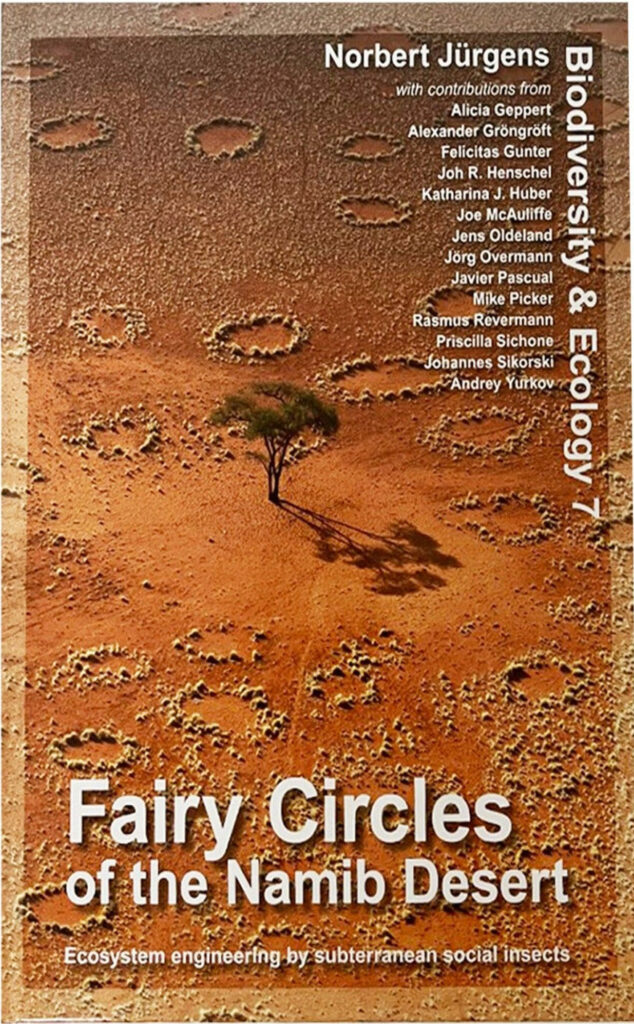In ‘Fairy Circles of the Namib Desert’, the focus is on the ecological role played by termites in shaping a fascinating and perplexing part of the landscape of the Namib Desert in Namibia, Angola, and South Africa.
The phenomenon of ‘fairy circles’ – countless circular areas without vegetation found along the eastern edges of the Namib Desert – has for decades been a topic of debate among scientists and observers of the desert landscape.
Explanations for the patterns have ranged from the presence of termites to self-regulation by grass vegetation depleting water in the circles – a theory most recently backed by research results announced by scientists from the University of Göttingen in Germany towards the end of last year.
In Klaus Hess Publishers’ ‘Fairy Circles of the Namib Desert’ though, scientist Norbert Jürgens and 14 co-authors conclude that while the occurrence of fairy circles can be explained by a variety of factors, ground termites are the main cause.
The authors point out that the term ‘fairy circles’, first illustrated in an article on conservation in the north-western areas of Namibia’s Kunene region in 1971, is generally used to refer to a variety of quite different structures.
The current state of research shows that the Namib Desert’s fairy circles are mainly caused by sand termites or harvester termites, the authors state.

The termites are described as ecosystem engineers that profoundly alter the landscape and make permanent life in the desert possible.
This is done by the creation of bare spots in the vegetation, with the effect that subsequent rainfall is not immediately absorbed and given off by plants.
Instead, rainwater percolates to soil depths below 50 centimetres, where it remains stored even during prolonged periods of drought, the authors record.
Through this process, the termites ensure the conservation of soil water required for their colonies’ survival.
For other organisms and ecosystem processes, too, the stored moisture “turns an ephemeral ecosystem with rare pulses of life into a permanently habitable one”, the authors write.
The results of decades of research are collected in this publication of close to 400 pages, in which fairy circles are discussed in terms that should be accessible to lay persons, and also with detailed scientific findings on the topic recorded.
Comprehensive and richly illustrated with photographs, maps and graphs, this is a landmark book – although pricey at around N$830 a copy – on what has been viewed as a puzzling natural phenomenon.


